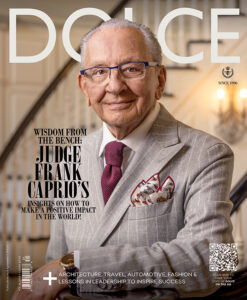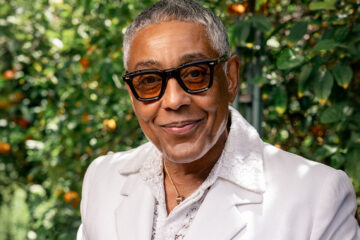A Queen Remembered
A nation and the world mourn the passing of Her Majesty Queen Elizabeth II and celebrate her remarkable life and reign.
A people filled with respect and affection, a city filled with sadness and a nation and world filled with appreciation marked the regal state funeral of Queen Elizabeth II in London on Monday, September 19, a ceremony most people alive today will never see the likes of again.
Amid the pomp, circumstance and historical significance, what was so striking were the two minutes of complete silence observed by perhaps a million people gathered to bid farewell to Britain’s oldest and longest-serving monarch following the service at Westminster Abbey, site of both her wedding and coronation. Silence can sometimes be so loud and can say so much.
The silence was out of respect and gratitude for the commitment to duty and service of someone who never expected to be Queen, but who may be remembered in the future as “Elizabeth the Great.” She was certainly one of the three greatest monarchs in British history, alongside Elizabeth I and Queen Victoria. All three were women, it is worth pointing out.
She was the “accidental Queen” due to two unforeseen events. The first was when her uncle, King Edward VIII, who’d been monarch for just eight months, announced his shocking and sudden abdication in 1936 so that he could marry his mistress, American divorcée Wallis Simpson. That left the throne to Elizabeth’s father, Prince Albert, crowned George VI, and suddenly made his eldest child, 10-year-old Elizabeth, heir to the throne. Until then she had been happy playing hide-and-seek with the guards at Windsor Castle, but now the carefree days of her childhood out of the spotlight were over.
During the Second World War, when she was just 14, she used her new position as heir to make a radio address to speak about the war to children who had been evacuated to North America and about why their fathers were away fighting. She enlisted to do her part in the fight against fascism, and during the war was a mechanic and drove ambulances. She made her dedication and commitment to her country clear on her 21st birthday, when she declared in her famous speech, “Whether my life is long or short, I devote it to your service.” Truer words may never have been spoken.
It was believed that Princess Elizabeth would have many years, if not decades, to prepare for the throne, but then the second unforeseen event occurred. Her father, a heavy smoker, drew his last breath at Sandringham on February 6, 1952, when he was just 56 years old. Elizabeth, just 26, was informed of the news while in a tree-house in Kenya, on a royal tour with her husband of only five years, Prince Philip, the dashing young Greek navy captain she’d first met when she was just 8 years old and he was 13. (They were third cousins, sharing a great-great-grandmother in Queen Victoria.)
Her coronation the following year was attended by Sir Winston Churchill, her first Prime Minister. On September 6, 2022, just two days before her death, she appointed her 15th British Prime Minister, Liz Truss. The coronation of Queen Elizabeth II was the first truly global television event; in fact, it caused a boom in the sale of televisions, which at the time was a relatively new medium.
When Elizabeth ascended the throne, not much was expected of the young Queen. After all, since the death of Queen Victoria, in 1901, the monarchy had been a man’s job. Britain was facing a long post-war recovery; the economy was in tatters and the British Empire retained only a shadow of its former glory. But Queen Elizabeth II surprised everyone with the seriousness of her commitment, working on the famous red boxes every day, and she eventually found her footing and began to bring her own style to the job.
She focused on expanding the Commonwealth to 56 countries and at the time of her death she was head of state to 2.5 billion people. She circled the world 42 times and visited more than 100 countries, becoming the most photographed human on the planet, and she reigned during the most transformational time in history.
When she assumed the throne, few Britons had cars, home telephones or indoor plumbing. By the time of her death, British astronauts were working on the International Space Station, the country was a leader in research and the development of pharmaceuticals and technology, and you could take a train under the English Channel to France.
Part of her legacy was her ability to adapt to changing times and changing events. She reigned during the cultural changes of the “Swinging ’60s,” endured the tumult and royal scandals of the 1980s and 1990s and adopted the technological changes of the 2000s. The annual Christmas broadcasts she introduced were always Britain’s most watched television shows of any year and she was the first member of the Royal Family to send a tweet.
She had an innate ability to laugh at herself and her station, taking a keen joy in taking off the crown and embracing what was popular at the time, whether it was making the Beatles Members of the Order of the British Empire in 1965 or pretending to jump out of a helicopter with James Bond to open the 2012 London Olympics or sharing tea and a marmalade sandwich with Paddington Bear this past spring to mark her 70th year on the throne.
Globally, among world leaders, she had no peer. When a new president or prime minister took office, a phone call to Queen Elizabeth II was always one of their first. She had gone everywhere, met everyone and could provide counsel and insight on global situations unlike anyone else. During her reign she met 14 American presidents, 12 Canadian prime ministers and seven popes. When those famous “class photos” were taken at any gathering of world leaders, no leader dare sit in the first-row centre seat — that was for Queen Elizabeth.
Naturally, with age, she began to pull back on some of her duties and royal engagements, ceasing to travel internationally many years ago and handing off some responsibilities to Prince Charles, such as this past spring when he read the Speech from the Throne at the opening of Parliament with the poignant visual of her Imperial State Crown resting on the empty throne beside him.
The death of her beloved husband in April 2021 seemed to drain her and begin a downward spiral. One of the most heartbreaking photos from the global pandemic was of Queen Elizabeth dressed in black and wearing a mask, sitting entirely alone, mourning her husband of 73 years during his funeral at Windsor Castle. Far removed from the trappings of her imperial power, she seemed so small and so human, enduring the isolation we all were experiencing.
Yet we were encouraged by her appearance this past June during the celebrations marking her 70th anniversary on the throne, standing on the balcony three times — the last time dressed in vivid green —— with Prince Charles and Prince William and their families. We were equally buoyed by the photo issued by the palace on Tuesday, September 6, when she greeted the new British Prime Minister, Liz Truss. While frail, Queen Elizabeth was standing and smiling, and once again doing what she always did best — her duty.
Concern mounted only two days later, at approximately 12:30 p.m. British Standard Time (BST, 7:30 a.m. EST), with the rare announcement that her doctors were “concerned by the Queen’s health.” Television commentators were quick to point out that, in the past, when media had made too much of any announcements concerning the Queen’s health the Palace had been quick to shut down any rumours. This time, the Palace went silent. Regular programming was halted.
At 4:30 p.m. Prime Minister Truss was handed a note in Parliament and immediately departed the chamber. “London Bridge was down”— that was the code signalling the Queen had died and that Operation London Bridge should be enacted. This was the funeral plan begun in the 1960s by the Queen herself, every department of British government and the military. The code was sent out to all diplomatic posts worldwide before the official announcement was made at 6:30 p.m.
Despite her advanced age of 96, the country was still not prepared for Elizabeth’s passing, which may explain the overwhelming outpouring of grief throughout the United Kingdom and the emotional days that followed. Mourners gathered from all stations and walks of life to mark with gratitude a promise faithfully fulfilled. From the Blitz to the pandemic and the incredible changes in between, for many Britons the Queen represented the history of their lives. Indeed, since her passing on September 8, it has been a historical turning of the page. The passing of a reassuring presence.
In times of constant change, the Queen gave the world 70 years of certainty, stability and consistency, with constant reminders of her kindness, warmth, integrity, wisdom, dignity, grace, loyalty and unwavering devotion to duty and service — traits that mean so much more in these turbulent times. Those traits will be her legacy.
Since September 8, the visuals have been of pageantry and traditional ceremony, from the coffin leaving Balmoral for a tour through hamlets and villages and her beloved Scottish countryside to the return to the grandeur of London, while overwhelmingly the emotion has been one of love and respect from a people filled with grief and gratitude.
The London portion of the funeral began with sailors from the Royal Navy slow-marching the gun carriage carrying the Queen’s coffin for the procession from Westminster Hall to Westminster Abbey, followed on foot by King Charles III and other members of the Royal Family. A point so clearly made over the period of mourning was that while she was the Queen, she was also a wife, mother, grandmother and greatgrand-mother. The flag-draped coffin was adorned with flowers, the royal orb and sceptre and the priceless Imperial State Crown, a powerful symbol of British monarchy dating from 1660 and encrusted with more than 3,000 jewels.
“Michelle And I Are Grateful To Have Witnessed Her Majesty’s Dedicated Leadership And We Are Awed By Her Legacy Of Tireless, Dignified Public Service” – Barack Obama
The funeral in the Abbey on September 19, the first funeral for a monarch held there since King George II’s funeral in 1760, was led by the Dean of Westminster, with readings by the Archbishop of Canterbury and new British Prime Minister Liz Truss, among others. They addressed 2,000 in-person attendees, a grieving nation and billions of viewers around the world watching on various platforms. A measure of the Queen’s global stature is that more than 500 heads of state and dignitaries from every corner of the globe attended the funeral, the largest such gathering in modern times and requiring the most complex security operation in recent history.
Following the service, the solemn funeral procession was led by members of the Royal
Canadian Mounted Police, followed by members of the National Health Service (NHS). Since the Queen was personally involved in every aspect of her own funeral planning over the decades, adding members of the NHS pointed to her ability to alter those plans since the pandemic.
The gun carriage travelled through London to Wellington Arch, where the coffin was transferred to the royal hearse for the drive to Windsor Castle for the committal service, after parading past hundreds of thousands of people gathered 30- and 40-deep on each side of the 2 1/2-mile Long Walk at Windsor castle in a magnificent display of English pomp and circumstance. Many countries try, but none does pageantry better.
While not attended by as many as at the Abbey service, the service at the King George VI Memorial Chapel in Windsor Castle later that evening was in many ways more emotional and certainly more ceremonial. While the Queen referred to Buckingham Palace as her office, she called Windsor Castle her home. Here, the orb, sceptre and Imperial State Crown were finally removed from the Queen’s coffin, signifying that she no longer held the title of monarch. These storied objects will be returned to the Tower of London to join the other Crown Jewels and reemerge for King Charles’s coronation, most likely next spring or summer.
During this service the poignant lowering of the coffin into the Royal Vault occurred, followed by the playing of “God Save the King.” The look in the eyes of King Charles at this moment clearly showed he was accepting the great magnitude of this moment in history. Following a reception, a private family service marked the Queen’s interment. She now lies beside her beloved late husband, Prince Philip.
The state funeral marked the culmination of a 12-day period of national mourning which saw something completely unprecedented, unexpected and yet very British happen, a collective expression of grief that became the centre-piece and main story-line.
Hundreds of thousands of people from around the world descended upon London to join what soon became proudly known as the “Queen’s Queue.” As it has done so many times in its history, from its demonstration of resilience during the Second World War through its enthusiastic celebration of coronations, jubilees and royal weddings, Britons came together in spirited solidarity: the Queen’s Queue was a truly British phenomenon.
“He Has Quite Simply Been My Strength And Stay All These Years. I Owe Him A Debt Greater Than He Would Ever Claim” – Queen Elizabeth II
This astounding lineup of people waiting to file past the Queen’s coffin in Westminster Hall stretched for up to 10 kilometres along the south bank of the Thames, with wait times anywhere from 12 to 24 hours, all for the opportunity to spend a few seconds in front of the coffin — to curtsey, bow a head or, in the case of veterans, to offer a poignant, final and firm salute. The prospect of such long waits did not deter the mourners in any way, with one saying, “If she can give us 70 years of service, I can give her 24 hours” — the very definition of the British spirit, to “Keep calm and carry on.”
The Queen’s Queue quickly became one of those rare, spontaneous and cathartic gatherings around a shared experience, with many of those in line making “line buddies” or “queue families,” sharing drinks and snacks with their new friends or holding each other’s spots when needed. Once more and for a final time in her special way, the Queen was bringing people together to share their emotions, grief and memories and to celebrate Her Majesty’s legacy. Expect a captivating documentary.
In a surprise appearance two days prior to the funeral, King Charles III and William, the new Prince of Wales, greeted the mourners in the queue to shake hands and personally thank them, perhaps an indication of a new direction now for the House of Windsor.
President Macron of France may have said it best for the world in his words of sympathy to the British people when he said, “To you, she was your Queen. But to us she was THE Queen.” While the ceremonies have been very British, the mourning has been global.
“If She Can Give Us 70 Years Of Service, I Can Give Her 24 Hours” – Mourner waiting in the queue
As this unique figure departs the stage, the United Kingdom and the whole world will now exhale after having experienced for 12 remarkable days an unprecedented global event unlike anything we’ve ever seen, which culminated in a moving, majestic, historic and extraordinarily fitting funeral, to honour a historic and extraordinary monarch. God bless the Queen. Long live the King.



























































































